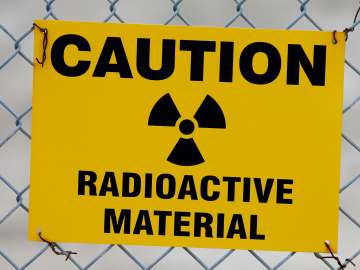Radioactive carbon from nuclear bomb tests found in deep ocean trenches
Organisms at the ocean surface have incorporated this "bomb carbon" into the molecules that make up their bodies since the late 1950s.
Scientists have found traces of radioactive carbon -- released into the atmosphere from 20th-century nuclear bomb tests -- in marine organisms that inhabit the Mariana Trench, the deepest spot on Earth.
Organisms at the ocean surface have incorporated this "bomb carbon" into the molecules that make up their bodies since the late 1950s.
The study, published in the journal Geophysical Research Letters, finds crustaceans in deep ocean trenches are feeding on organic matter from these organisms when it falls to the ocean floor.
The results show human pollution can quickly enter the food web and make its way to the deep ocean, researchers said.
"Although the oceanic circulation takes hundreds of years to bring water containing bomb carbon to the deepest trench, the food chain achieves this much faster," said Ning Wang, a geochemist at the Chinese Academy of Sciences in China.
"There's a very strong interaction between the surface and the bottom, in terms of biologic systems, and human activities can affect the biosystems even down to 11,000 metres, so we need to be careful about our future behaviours," said Weidong Sun, a geochemist at the Chinese Academy of Sciences.
"It's not expected, but it's understandable, because it's controlled by the food chain," said Sun.
The results also help scientists better understand how creatures have adapted to living in the nutrient-poor environment of the deep ocean, researchers said.
The crustaceans they studied live for an unexpectedly long time by having extremely slow metabolisms, which they suspect may be an adaptation to living in this impoverished and harsh environment.
Carbon-14 is radioactive carbon that is created naturally when cosmic rays interact with nitrogen in the atmosphere.
Carbon-14 is much less abundant than non-radioactive carbon, but scientists can detect it in nearly all living organisms and use it to determine the ages of archeological and geological samples.
Thermonuclear weapons tests conducted during the 1950s and 1960s doubled the amount of carbon-14 in the atmosphere when neutrons released from the bombs reacted with nitrogen in the air.
Levels of this "bomb carbon" peaked in the mid-1960s and then dropped when atmospheric nuclear tests stopped. By the 1990s, carbon-14 levels in the atmosphere had dropped to about 20 per cent above their pre-test levels.
This bomb carbon quickly fell out of the atmosphere and mixed into the ocean surface.
Marine organisms that have lived in the decades since this time have used bomb carbon to build molecules within their cells, and scientists have seen elevated levels of carbon-14 in marine organisms since shortly after the bomb tests began.
The deepest parts of the ocean are the hadal trenches, those areas where the ocean floor is more than six kilometers below the surface. These areas form when one tectonic plate subducts beneath another.
Creatures that inhabit these trenches have had to adapt to the intense pressures, extreme cold, and lack of light and nutrients.
In the study, researchers wanted to use bomb carbon as a tracer for organic material in hadal trenches to better understand the organisms that live there.
Researchers analysed amphipods collected in 2017 from the Mariana, Mussau, and New Britain Trenches in the tropical West Pacific Ocean, as far down as 11 kilometers below the surface.
Amphipods are a type of small crustacean that live in the ocean and get food from scavenging dead organisms or consuming marine detritus.
Surprisingly, the researchers found carbon-14 levels in the amphipods' muscle tissues were much greater than levels of carbon-14 in organic matter found in deep ocean water.
They then analysed the amphipods' gut contents and found those levels matched estimated carbon-14 levels from samples of organic material taken from the surface of the Pacific Ocean.
This suggests the amphipods are selectively feeding on dead particulate organic from the ocean surface that falls to the ocean floor.
